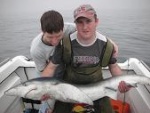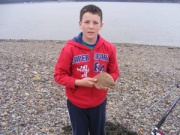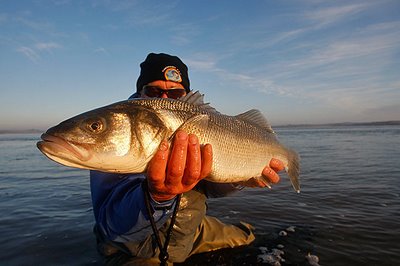Latest topics
Similar topics
Forum
- IF You are currently viewing our boards as a guest which gives you limited access to view most discussions and access our other features. By joining our free community you will have access to post topics, communicate privately with other members (PM), respond to polls, upload content and access many other special features. Registration is fast, simple and absolutely free so please, join our community today!If you have any problems with the registration process or your account login, please contact rinnasharksac@gmail.com
- BORN TO FISH
tramore 30-8-10
3 posters
 tramore 30-8-10
tramore 30-8-10
a few of us went out last night to use up some bait from the competition sat night.fished from 8-1030 high tide around half 9.fishing was good enough a few coalies , a few flounder ,a bass and a weaver.

barry-

Number of posts : 1021
Age : 42
Location : waterford
Job/hobbies : keeping fish away from my baited hooks
Reputation : 10
Registration date : 2008-03-15
 Re: tramore 30-8-10
Re: tramore 30-8-10
Only one small flounder for me. Must investigate weavers myself to know what to look out for. Dont want a run in with one if i can help it.

jonnyj-

Number of posts : 7
Age : 41
Location : Waterford
Reputation : 0
Registration date : 2010-06-03
 Weever fish
Weever fish
[img] [/img]
[/img]
Beware
of the Weever fish!

Echiichthys
vipera
Beware of a little sandy coloured fish that lives in the sand.
It spends most of the time actually buried under the sea bed with just
its venomous dorsal fin showing above the sandy bottom. On the rare occasions
when it is plentiful, rows of erect black triangles decorate the sandy
floor of the sea bed.
Woe betide a bather who steps upon a buried fish. The pain is usually
described as excruciating as the spines embed into the human flesh and
discharge their venom. The pain is at its most intense for the first two
hours when the foot goes red and swells up and is then it feels numb until
the following day with irritation and pain that may last for up to two
weeks. Sometimes, the spine breaks off in the foot and it will cause discomfort
until it is removed.

The venom is a type of protein and is heat labile. This means that the
only treatment is to put the effected limb in water as hot as the victim
can stand without causing scalding. (In tests, the protein denatured above
40°C.)
This is meant to bring about rapid and permanent relief, but I have fortunately
not needed to put this treatment to the test. Most reports of stings occur
during the month of August. This does not mean that this fish are particularly
prevalent inshore during this month but merely reflects the greater numbers
of bathers as the sea temperature reaches the highest of the year. The
fish is also encountered by shrimpers pushing their net along the sandy
shallows in the first half of the year. The front beam of the net dislodges
the fish that may be completely buried under the sand. They are also caught
by anglers. Many of these rod and line fishermen do not know what they
have caught and may be in for an unpleasant surprise. The only death I
have on record after someone being stung by a Weever occurred as long ago
as 1927, (this could be 1933, the original file has been mislaid) when
an angler suffered multiple stings whilst fishing off Dungeness. (As this
is the only death recorded, the suspicions are that the victim may have
died of other medical causes exacerbated by the multiple stings. Another
report of a death, I have been unable to confirm.)
Weevers in your Wellies
 Weevers
Weevers
have occasionally been found at toddler bathing depth (a
few reports have been received) but swimmers usually do not need to
worry unless they put their foot down. The Weever is a naff swimmer: it
its sort of wobbles about as it leaves its sandy hiding place. It spends
most of its life buried waiting for a passing small fish before suddenly
emerging from the sand to engulf its prey in its large mouth. The Weever
has to be quick to catch is prey though, and for half a metre it has a
fair turn of speed, before sinking to the sea floor. It then dives
straight down to the sand gain burying itself with its rear end first.
If it cannot hide in this way it will panic and it is conceivable that
in the unlikely event it jumped into your wellies it would thrash around
stinging the occupant on multiple occasions. This fish does not have a
swim bladder, the device used by most bony fish to keep buoyant.
The fish's mouth itself is in an unusual position on its head, oblique
and almost vertical and contains some of the most sharp and vicious looking
teeth in the undersea world. Luckily it only reaches about 15 cm long.

The species found in shallow waters is called the Lesser Weever
with the scientific name of Echiichthys vipera. There is a larger
species called the Greater Weever, Trachinus
draco, found in deeper water and occasionally seen on the fishmongers
slab. The word 'weever' was first found used in the English language during
the 17th century and comes from the Old northern French word 'wivre'. The
venomous fin spines are a defensive armament and the Weever does use them
to capture prey.
 [/img]
[/img]Beware
of the Weever fish!

Echiichthys
vipera
Beware of a little sandy coloured fish that lives in the sand.
It spends most of the time actually buried under the sea bed with just
its venomous dorsal fin showing above the sandy bottom. On the rare occasions
when it is plentiful, rows of erect black triangles decorate the sandy
floor of the sea bed.
Woe betide a bather who steps upon a buried fish. The pain is usually
described as excruciating as the spines embed into the human flesh and
discharge their venom. The pain is at its most intense for the first two
hours when the foot goes red and swells up and is then it feels numb until
the following day with irritation and pain that may last for up to two
weeks. Sometimes, the spine breaks off in the foot and it will cause discomfort
until it is removed.
The venom is a type of protein and is heat labile. This means that the
only treatment is to put the effected limb in water as hot as the victim
can stand without causing scalding. (In tests, the protein denatured above
40°C.)
This is meant to bring about rapid and permanent relief, but I have fortunately
not needed to put this treatment to the test. Most reports of stings occur
during the month of August. This does not mean that this fish are particularly
prevalent inshore during this month but merely reflects the greater numbers
of bathers as the sea temperature reaches the highest of the year. The
fish is also encountered by shrimpers pushing their net along the sandy
shallows in the first half of the year. The front beam of the net dislodges
the fish that may be completely buried under the sand. They are also caught
by anglers. Many of these rod and line fishermen do not know what they
have caught and may be in for an unpleasant surprise. The only death I
have on record after someone being stung by a Weever occurred as long ago
as 1927, (this could be 1933, the original file has been mislaid) when
an angler suffered multiple stings whilst fishing off Dungeness. (As this
is the only death recorded, the suspicions are that the victim may have
died of other medical causes exacerbated by the multiple stings. Another
report of a death, I have been unable to confirm.)
Weevers in your Wellies
 Weevers
Weevershave occasionally been found at toddler bathing depth (a
few reports have been received) but swimmers usually do not need to
worry unless they put their foot down. The Weever is a naff swimmer: it
its sort of wobbles about as it leaves its sandy hiding place. It spends
most of its life buried waiting for a passing small fish before suddenly
emerging from the sand to engulf its prey in its large mouth. The Weever
has to be quick to catch is prey though, and for half a metre it has a
fair turn of speed, before sinking to the sea floor. It then dives
straight down to the sand gain burying itself with its rear end first.
If it cannot hide in this way it will panic and it is conceivable that
in the unlikely event it jumped into your wellies it would thrash around
stinging the occupant on multiple occasions. This fish does not have a
swim bladder, the device used by most bony fish to keep buoyant.
The fish's mouth itself is in an unusual position on its head, oblique
and almost vertical and contains some of the most sharp and vicious looking
teeth in the undersea world. Luckily it only reaches about 15 cm long.

The species found in shallow waters is called the Lesser Weever
with the scientific name of Echiichthys vipera. There is a larger
species called the Greater Weever, Trachinus
draco, found in deeper water and occasionally seen on the fishmongers
slab. The word 'weever' was first found used in the English language during
the 17th century and comes from the Old northern French word 'wivre'. The
venomous fin spines are a defensive armament and the Weever does use them
to capture prey.

BASS POINT-

Number of posts : 1
Reputation : 0
Registration date : 2008-03-13
 Re: tramore 30-8-10
Re: tramore 30-8-10
there plenty around fished tramore twice in last two months and got one each time fishing in close on high tide.

barry-

Number of posts : 1021
Age : 42
Location : waterford
Job/hobbies : keeping fish away from my baited hooks
Reputation : 10
Registration date : 2008-03-15
 Re: tramore 30-8-10
Re: tramore 30-8-10
Brilliant post Bass Point. Thanks

jonnyj-

Number of posts : 7
Age : 41
Location : Waterford
Reputation : 0
Registration date : 2010-06-03
Permissions in this forum:
You cannot reply to topics in this forum
 Dunmore East Small Boats Festival 2019
Dunmore East Small Boats Festival 2019










» 2021 Master Angler
» Martin Halley 2021
» 2021 FIXTURES
» 2021 FIXTURES
» 2020 Years Results
» 2020 Results and Master Angler Tables
» 2020 Results and Master Angler Tables
» 2019 Juvenile Master Angler
» 2019 Master Angler & Longest Fish Winners
» Big Fish Competition Tramore Beach
» Dunmore East Small Boats 2019 Report
» 2019 Juv Fixtures
» Sharktrust angling project
» Irish Federation of Sea Anglers 2018 All Ireland & Inter Provincial Juvenile Boat Championship 11th May 2019 - Cork Harbour
» Shark & Ray Best Practice
» ****** 2019 Dunmore East Small Boats******
» 2019 Fixtures
» Sea Angling Rigs
» Go Fishing on line mag
» BASS Reg, 2019
» Ling Rocks Cork
» Tides Ireland
» How to catch black Bream
» Book of Rigs
» Sat 15th dec Xmass competition dunmore dock 3 to 6pm
» A few photos from the Rinnashark sac Juvenile 2018 Christmas Competition in Cheekpoint
» Small Boats video Thanks Ian Stubbs
» 2018 Master Angler & Longest Fish Winners
» Master Angler 2018